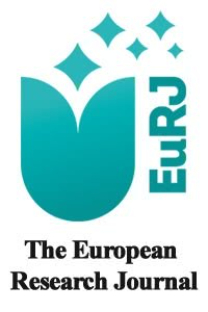Is the fear of malignancy in large adrenal masses realistic?
___
- 1. Adler JT, Meyer-Rochow GY, Chen H, Benn DE, Robinson BG, Sippel RS et al. Pheochromocytoma: current approaches and future directions. Oncologist 2008;13:779-93.
- 2. Asari R, Koperek O, Niederle B. Endoscopic adrenalectomy in large adrenal tumors. Surgery 2012;152:41-9.
- 3. Favia G, Lumachi F, Basso S, D’Amico DF. Management of incidentally discovered adrenal masses and risk of malignancy. Surgery 2000;128:918-24.
- 4. Mantero F, Terzolo M, Arnaldi G. A survey on adrenal incidentiloma in Italy. Study group on adrenal tumors of the Italian Society of Endocrinology. J Clin Endocrinol Metab 2000;85:637-644.
- 5. Moreira SG Jr, Pow-Sang JM. Evaluation and management of adrenal masses. Cancer Control 2002;9:326-34.
- 6. Nieman LK. Approach to the patient with an adrenal incidentiloma. J Clin Endocrinol Metab 2010;95:4106-13.
- 7. Fassina AS, Borsato S, Fedeli U. Fine needle aspiration cytology (FNAC) of adrenal masses. Cytopathology 2000;11:302-11.
- 8. Erbil Y, Barbaros U, Aral F, Özbey N, İşsever H, Bozbora H, et al. [Transabdominal laparoscopic adrenalectomy: our clinical experience in 62 procedures]. Endokrinolojide Diyalog Dergisi 2008;4:181-7. [Article in Turkish]
- 9. Abdel-Aziz TE, Rajeev P, Sadler G, Weaver A, Mihai R. Risk of adrenocorticalcarcinoma in adrenal tumours greater than 8 cm. World J Surg 2015;39:1268-73.
- 10. Linos DA, Stylopoulos N, Raptis SA. Adrenaloma: a call for more aggressive management. World J Surg 1996;20:788-93.
- ISSN: 2149-3189
- Yayın Aralığı: 6
- Başlangıç: 2015
- Yayıncı: Prusa Medikal Yayıncılık Limited Şirketi
Effect of amino acid infusion on perioperative thermoregulation in newborn surgery
Mustafa Okumuş, Faik Tansu Salman
Cemile İdiz, Çoşkun Çakır, Murat Keğin, Abdülhakim İbrahim Ulusoy
Reliability of cavernous sinus sampling in management of Cushing’s disease
Mahmut Çamlar, Burak Kınalı, Necmettin Tanrıöver, Pınar Kadıoğlu, Seçil Erden, Civan Islak, Naci Koçer, Osman Kızılkılıç, Meryem Merve Ören, Nurperi Gazioğlu
Kamuran Çelik, Erol Armağan, Erman Uygun, Havva Özge Özkan Yıldız, Sibel Gafuroğulları, Halil Kaya, Funda Yılmaz, Melih Yüksel
Selim Genç, Taha AYYILDIZ, Osman ŞALKACI, İ brahim Ali HASSAN, İ brahim Abdi KEİNAN, Hanefi ÇAKIR
Abdullah Erdoğan, Ercüment Keskin
Ahmet Kağan As, Mesut Engin, Tamer Türk
Selim Genç, Taha Ayyıldız, Osman Şalkacı, İbrahim Ali Hassan, İbrahim Abdi Keinan, Hanefi Çakır
Abdullah ERDOĞAN, Ercüment KESKİN
Mehmet Kaplan, İbrahim Halil Kurt, Alaa Quisi, Gökhan Alıcı, Şerafettin Demir, Fethi Yavuz, Yurdaer Dönmez
